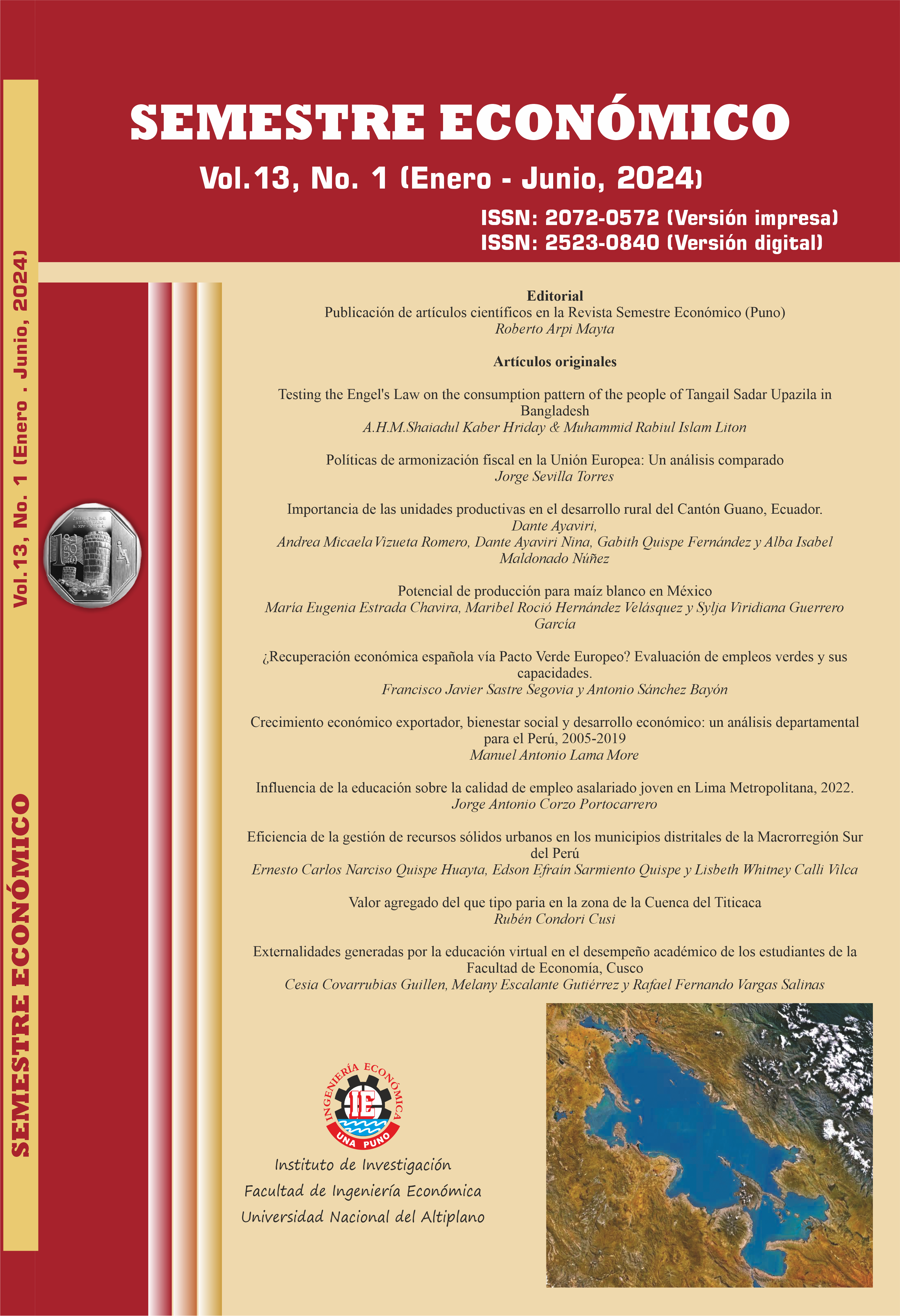Externalities generated by virtual education in the academic performance of students of the Faculty of economics (UNSAAC – 2022)
Keywords:
Higher education, external effects, social and economic externalities, internet access, computer equipment.Eliminar computer equipmentAbstract
The general objective of this research work is to determine how the externalities generated by virtual education are related to the academic performance of the students of the Faculty of Economics (UNSAAC) in the year 2022, using the quantitative approach as a methodology, founded in a non-experimental design and with a correlational descriptive scope. As study subjects, there were 252 Economics students, the sampling was simple random. The data collection techniques were the virtual survey using Google Forms. To identify the way in which the externalities generated by virtual education are related to academic performance and, if these have a significant effect on the academic performance of students, the Kolmogorov-Smirnov normality test was applied, since the sample study is greater than 50 and the results of significance are 0.000 < 0.05 for each indicator, therefore, we worked with the Rho-Spearman statistic, by using SPSS version 26 a lower p value of 0.001 was obtained. to 0.05. Concluding that there is a significant relationship between the externalities generated by virtual education and the academic performance of Economics students - UNSAAC in the year 2022. In addition, it was identified that the social and economic externalities generated by virtual education that have significance in the academic performance are the environment where one studies, mental health, resilience, the quality of the internet connection, time savings, electricity costs, student internet service and investment in computer equipment.














